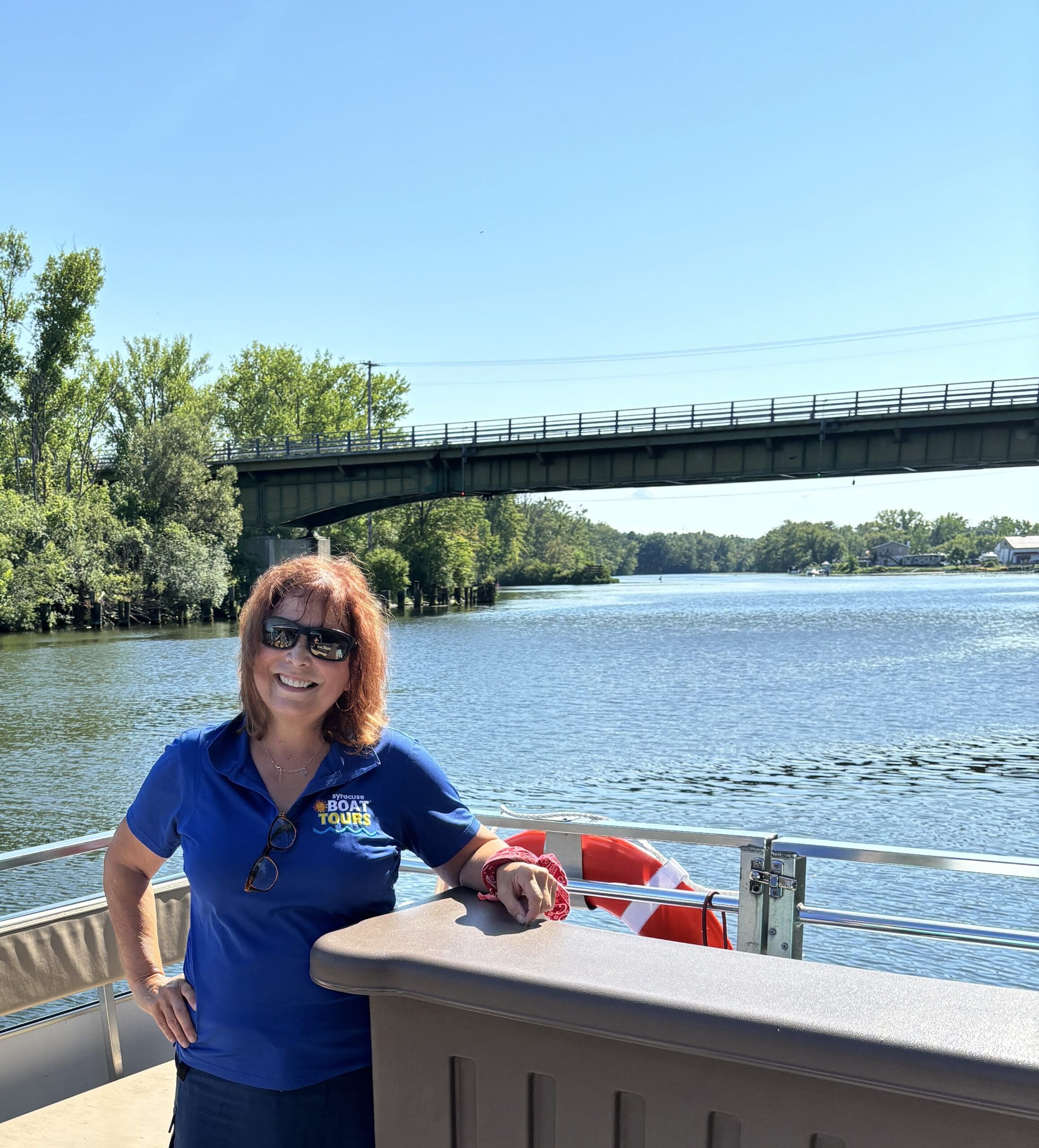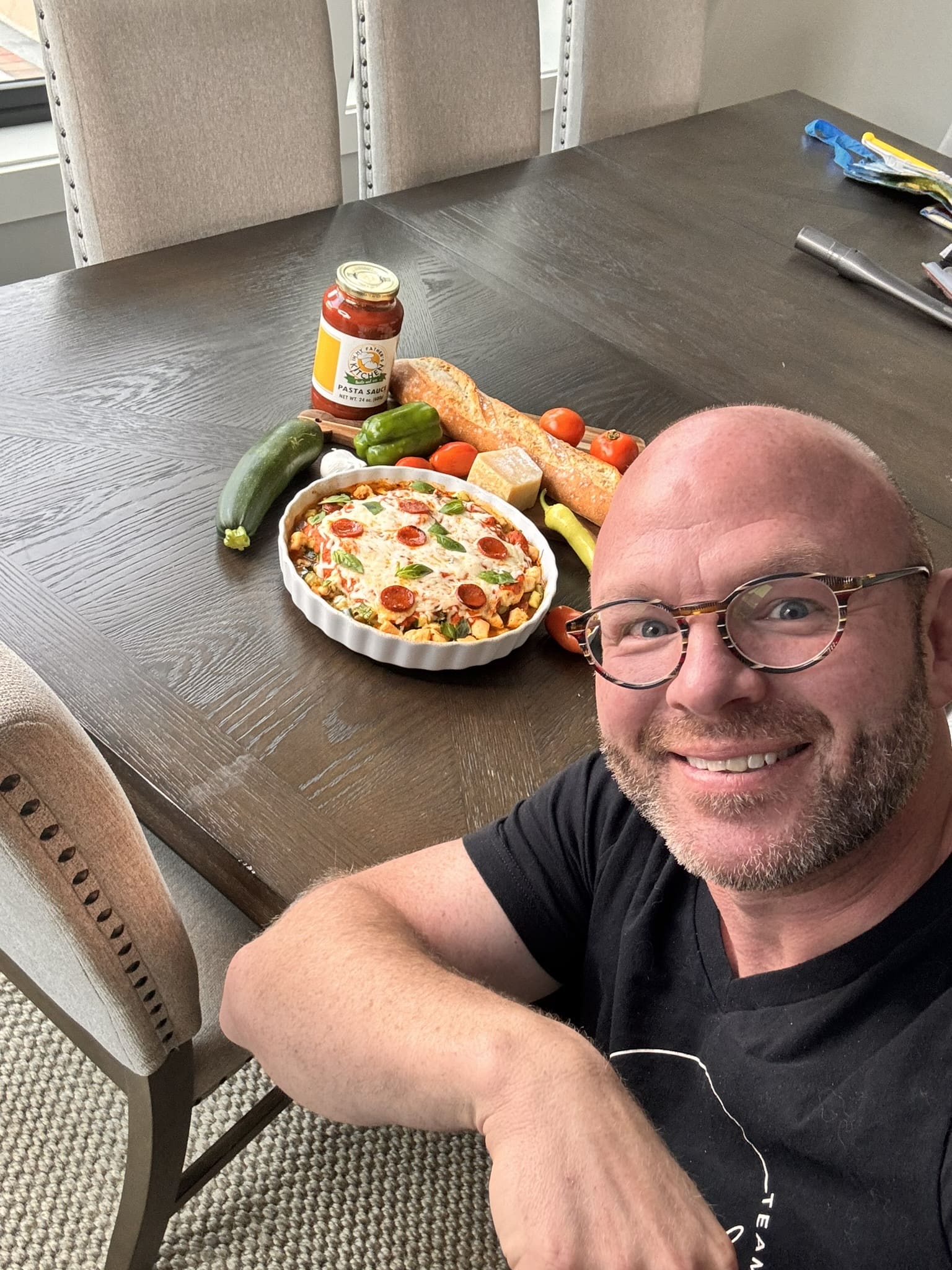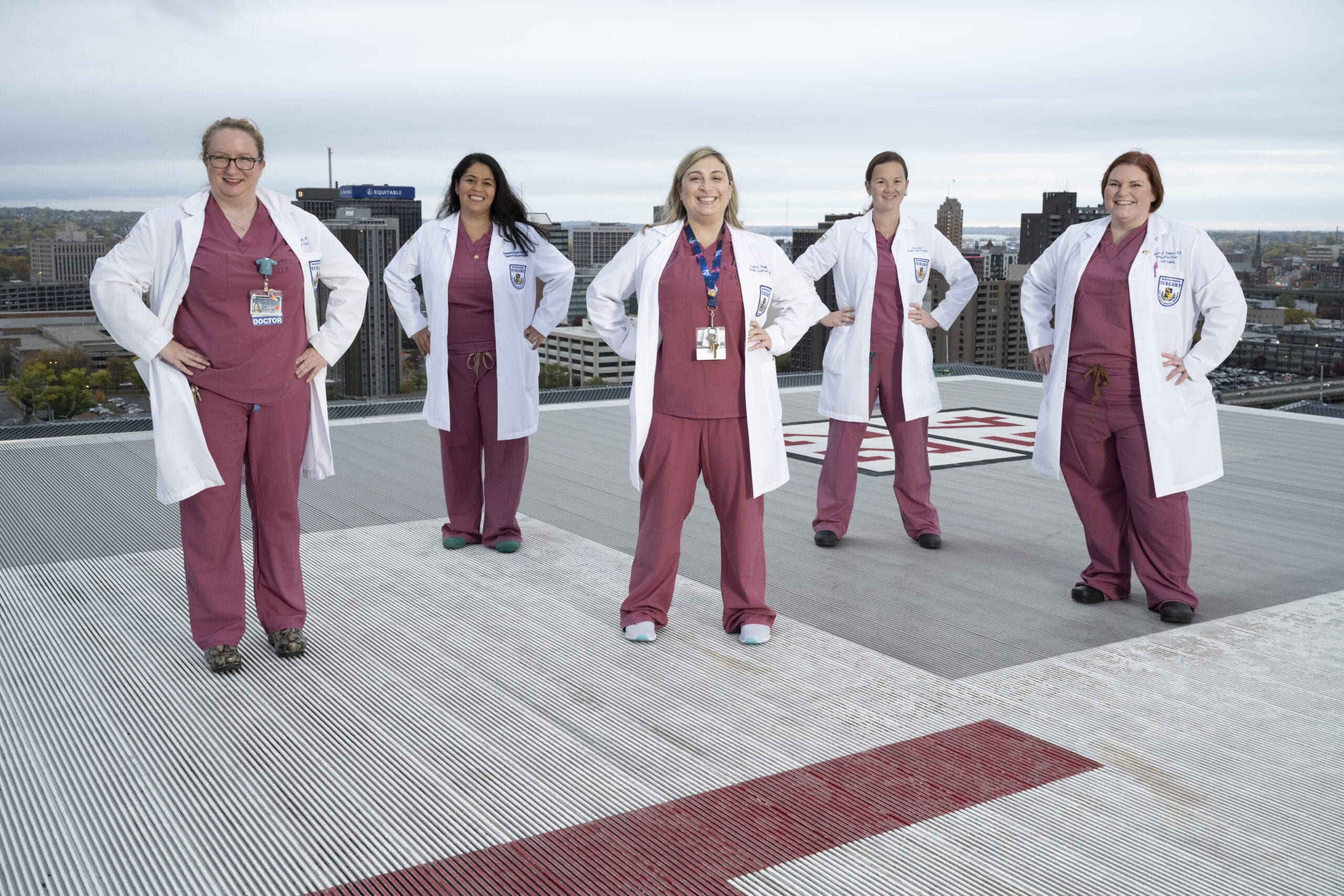Making the Most of the MOST
By Lorna Oppedisano | Photography by Alice G. Patterson
When the new Milton J. Rubenstein Museum of Science and Technology president, Toni Martin, is introduced for the first time to a group of visiting students on a field trip, she greets them with words of wisdom and advice.
“The work that you’re doing will prepare you for anything,” she tells them, explaining that while she’s not a scientist or engineer, the things she’s learned along the journey that led her to the MOST prepared her for this job, just as the experiments they’re about to perform can prepare them.
“This is a step,” she continues. “Enjoy these little pieces of knowledge you’re getting — because some day, it’ll all click together, and you’ll be able to do whatever you want.”
With her background in nonprofit fundraising, Toni’s path to the position of president of the 35-year-old institution was nontraditional.
But with its own background of financial struggle, a nontraditional leader was just what the MOST needed.
Since taking the reins a year and a half ago — selected by a large search committee on a nationwide quest — Toni has added staff, exhibits and revenue, as well as increased fundraising efforts.
“Now it’s all about how we’re positioning the MOST for growth, wherever we are,” Toni said. “It’s been a really exciting time to lead this organization.”
Unusual sparks
Born in Watertown and raised in Mexico, N.Y., Toni didn’t have dreams of heading up Syracuse’s Museum of Science and Technology. In fact, it wasn’t until one day in her mid-20s that she realized she wanted a professional career. Getting her child ready for the day before heading off to work herself, Toni picked up the phone and called Genesee Community College.
“Somebody put me through to admissions, and the woman I talked to said, ‘College is for everybody,’” Toni remembered.
On her next day off, Toni drove the hour-long car ride to Batavia to discuss her options — baby in tow — and the following fall semester, started taking classes.
Toni worked in the hospitality industry while she earned a degree. She also volunteered in her community.
Her ability to juggle successful door-to-door fundraising efforts for the local American Cancer Society chapter, two babies in diapers, a day job and a degree in the works earned Toni a job offer for the position of executive director of Wyoming County’s modest American Cancer Society office.
“My lineage is the training I got from a great, big national health organization that hired a woman in a community with more cows than people,” she said with a laugh.
That job led Toni to other positions in the nonprofit sector, many of them in the Syracuse area.
Prior to accepting the position of president at the MOST, Toni worked as associate director at Catholic Charities of Onondaga County for eight years. She actually had planned to retire from that job, Toni said.
But then came the news that the MOST’s last president, Larry Leatherman, planned to retire.
Hypothesizing presidency
The job description for the ideal candidate to fill the position of MOST president called for someone with a background in STEM — science, technology, engineering and math — who also had experience fundraising and a knowledge of Central New York philanthropy.
“Larry was both,” she said. “He was a scientist with a couple very impressive master’s degrees.”
But finding that blend in another individual would be difficult.
Though she didn’t have a science background, Toni decided to apply. If hired, she would be the first female president, as well as the first from a business, not science, background.
“I had taken a careful look at the MOST’s financial situation — and it was dire,” Toni said. “I honestly really didn’t know if I wanted that kind of a challenge.”
On one hand, she thought, it would be a “capstone experience” to lead the MOST. She’d worked hard to get where she was, and, if chosen, this would be the chance of a lifetime.
But on the other hand, her second granddaughter had just been born. The family lived in Arizona — not exactly a weekend trip. She’d married in April 2015, and was still working through the name change process. And, of course, she’d planned to retire from a job she loved at Catholic Charities.
Toni decided to withdraw her name from the search. But, after the search chair reached out to her weeks later, she decided to go for it again.
In January of 2016, Toni became the third president of the MOST.
Leading with intent
Toni approaches everything she does with an intention. She credits her management style to two influences: her professional experiences and her yoga practice.
“The jobs that prepared me weren’t the jobs,” she explained. “They were the bosses that I worked for.”
They instilled in her the values of problem solving, communication, fundraising and more.
Her last highly influential boss, Catholic Charities’ Micheal Melara, showed her the human side of leadership.
“It’s all about how you work with — not how they work for — how you work with the people in your organization,” she said, “and that sense that you influence people’s performance in a daily and very profound way.”
The second influence on Toni’s management style is more personal.
About 10 to 15 years ago, Toni encountered a number of serious medical issues. After undergoing surgery that affected her balance, she tried a yoga class. It changed her life and she hasn’t looked back since, she said.
The regular practice helps her think more clearly, accomplish more and, above all, gives her pause. It helps her take a minute to reflect before reacting.
“And in leadership, being able to step back and hear people, that’s the pause, that little breath of, ‘OK,’” she said, explaining that two decades ago, she might have been more tempted to act on her gut reactions. “I have trained myself with yoga to just take that breath — and then ask a question. That’s what yoga has done for me and with me.”
Experimenting with innovation
When she began as the MOST president, Toni set three goals for her first three years: get the museum on its feet, achieve fiscal stability and make the institution sustainable.
The first year was devoted to the basics — things like adding staff, fixing exhibits and investing in landscaping.
In growing the staff, Toni had to make decisions strategically.
“The challenge is hiring exactly when we need to, so nothing happens to the growth. But you can’t hire too soon,” Toni explained.
So Toni made what she refers to as “transformational hires” — people whose skill sets, qualifications and experience couldn’t be found in any other staff member, she explained.
Lauren Kochian, the MOST’s executive vice president, was the first of Toni’s hires. Due to Lauren’s fundraising expertise, Toni knew she would be a crucial member of the team. Within six weeks of Lauren’s start, the team saw an increase in basic fundraising, Toni said.
Now that Toni and her staff have the museum on its feet, they’re about a half-year into the fiscal stability phase.
Toni summed up this year’s goals: “to reduce the amount of time payables are held, to increase the donations coming in the door [and] to find fundable opportunities for people who really want to invest in the MOST,” she listed.
The team has seen gains from all six revenue-producing avenues — admissions, membership, IMAX theater ticket sales, facility rentals, gift shop purchases and miscellaneous items like birthday parties or family gatherings, Toni said.
Along with financial data, Toni also gathers anecdotal research. On a regular basis, she and Lauren wander the MOST exhibit floor, getting feedback from guests about their experiences. The duo asks two questions: “What made you choose the MOST to get out today?” and “What do you think of what we’re doing here?”
Depending on who they’re talking to — parents, grandparents, a couple on a date — the answers vary. At the beginning, Toni and Lauren would often hear, “This place isn’t very clean,” or, “It just seems like everything’s broken.” Toni hired a professional institutional housekeeper. Within two months, the difference was very noticeable, she said.
Another issue was, “There’s not enough for little kids to do.”
That sentiment helped spark new developments at the MOST in the last year and a half. In the MOST’s original conception, it was geared primarily toward 9- to 14-year-olds, Toni explained. But with the number of small children — with short attention spans — visiting the museum, the model needed to change, she said.
So they’ve made existing exhibits more accessible, and created demonstrations and table activities for younger children.
Toni’s favorite is the giant sea of large foam blocks. As children from different families meet in the middle of the pile, to the young minds, the blocks can be anything from a house to a fort to a maze.
“And it changes with every person or every family or group that’s in there,” Toni said with a twinkle in her eye. “They’re doing something unique that’s never been done.”
Once this year is over, Toni and her team will move on to the third step of their three-year plan — focusing on long-term growth and stability.
“I want to be confident that I’ve put everything in place, that the bills are paid, the people are paid, visitors are happy [and] they come back,” Toni said.
A MOST positive future
The task of getting an institution like the MOST back on its feet and thriving is not without difficulties.
“Funding for arts and small educational institutions, like little museums, has been fragile for a very long time,” Toni explained. “And the uncertainty around the federal government funding — it’s just a different environment, no matter what field you come from.”
Organizations the MOST might generally apply to for grants, like the National Science Foundation or NASA, are still awaiting word on their own cutbacks, she said. That makes the emphasis on local fundraising even more crucial.
Despite any challenges, Toni seems completely at home and calmly confident in her role as president. A mother and grandmother herself, it’s no surprise one of her favorite parts of the job is welcoming students to the museum.
Several times a year, children pile off the buses outside the MOST. From Toni’s modest office overlooking the bus turnaround, she can see the students bounding up the ramp as they make their ways to the door, “vibrating with energy,” she described.
“They cannot wait to be here,” Toni said. “And it never stops being a big deal to me.” SWM
Visit the Milton J. Rubenstein Museum of Science and Technology at 500 S. Franklin St. in downtown Syracuse. Summer hours (through Aug. 27) are Monday through Wednesday and Friday through Sunday, 10 a.m. to 5 p.m.; Thursday, 10 a.m. to 8 p.m. During regular hours, the MOST is closed on Mondays and Tuesdays. For more information, visit most.org.





